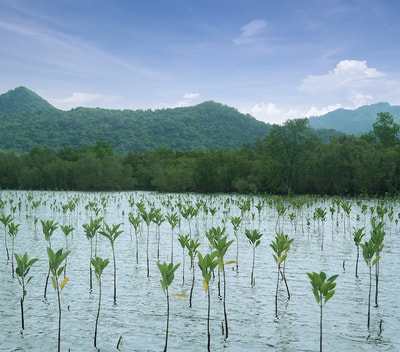Freia Pico de Loro
It's Coral Triangle Day at the Batangas resort Hamilo Coast
The Coral Triangle covers an area of around 5.7 million square kilometers of ocean that includes the waters of the Philippines, Indonesia, Malaysia, Papua New Guinea, the Solomon Islands and Timor-Leste. (See the regional map here.)
According to the Coral Triangle Initiative on Coral Reefs, Fisheries and Food Security (CTI-CFF), a multilateral partnership among these six countries, the Coral Triangle is home to 76 percent of the world’s known coral species and 37 percent of the world’s coral reef fish species, plus commercially valuable species such as tuna, whales, dolphins, rays, sharks, and six of the world’s seven known species of marine turtles.
However, said the CTI-CFF, more than 85 percent of the reefs in the Coral Triangle are now being directly threatened by local human activities, including unsustainable fishing practices like cyanide fishing, poorly planned development, pollution, a growing population, as well as the effects of climate change.
Apart from this, the ocean is being overfished, which leads to the issue of sustainability. When the supply of seafood is compromised, the world’s food security and livelihood also become endangered. Stocks of Pacific bluefin tuna, for example, have decreased significantly. About 73 million sharks are also slaughtered each year for the lucrative shark fin trade.
According to World Wide Fund for Nature-Philippines (WWF-Philippines) president Lory Tan, “We have cut our fish stocks by 90 percent in the last 50 years. What will we do in 30 years, when the fish are gone and our population will be more than 100 million?”
According to the Coral Triangle Initiative on Coral Reefs, Fisheries and Food Security (CTI-CFF), a multilateral partnership among these six countries, the Coral Triangle is home to 76 percent of the world’s known coral species and 37 percent of the world’s coral reef fish species, plus commercially valuable species such as tuna, whales, dolphins, rays, sharks, and six of the world’s seven known species of marine turtles.
However, said the CTI-CFF, more than 85 percent of the reefs in the Coral Triangle are now being directly threatened by local human activities, including unsustainable fishing practices like cyanide fishing, poorly planned development, pollution, a growing population, as well as the effects of climate change.
Apart from this, the ocean is being overfished, which leads to the issue of sustainability. When the supply of seafood is compromised, the world’s food security and livelihood also become endangered. Stocks of Pacific bluefin tuna, for example, have decreased significantly. About 73 million sharks are also slaughtered each year for the lucrative shark fin trade.
According to World Wide Fund for Nature-Philippines (WWF-Philippines) president Lory Tan, “We have cut our fish stocks by 90 percent in the last 50 years. What will we do in 30 years, when the fish are gone and our population will be more than 100 million?”
read more...
http://www.gmanetwork.com/news/lifestyle/travel/367975/it-s-coral-triangle-day-at-the-batangas-resort-hamilo-coast/story/
http://www.gmanetwork.com/news/lifestyle/travel/367975/it-s-coral-triangle-day-at-the-batangas-resort-hamilo-coast/story/
freia pico de loro, hamilo coast freia, hamilo coast pico, pico de loro hamilo coast, hamilo coast pico de loro cove, freia condo, freia units pico, freia nasugbu batangas, freia apartments, freia condominiums, freia batangas,



